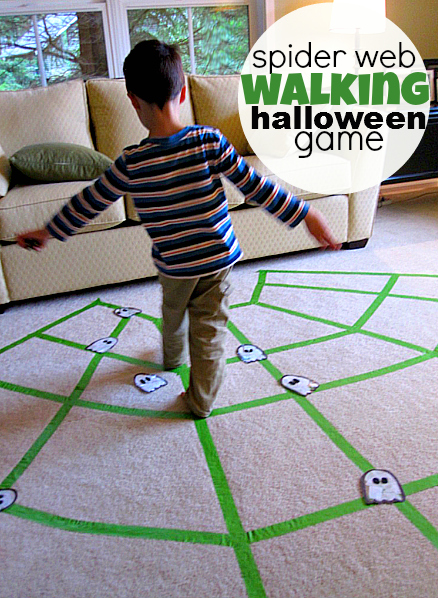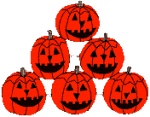Once upon a time there lived a farmer, a strapping, handsome lad named Jack. He grew up on his parents' farm, and when they passed away, he inherited it. Trouble was, Jack didn't care much for work. He had a great wit and a quick tongue, but he was a lazy one, too. And so over the years the fields went to seed, all but a field of turnips, which survived in spite of Jack's neglect.
Jack was also known as a trickster, and never was there anyone who could pull a trick on old Jack. But one day there came a knock upon the door, and there stood the devil himself.
"I'll make you a wealthy man," the devil told Jack. "All you need to do is sell your soul to me. If I know you, that won't be a worry at all."
Now Jack may have been lazy, and he may have liked to play a trick or two, but he was no fool. He had no interest in selling his soul to anyone, and certainly not to the devil.
Trouble was, the devil is the greatest trickster of all, so Jack had to think about how he was going to fool him. "Let me think a while," said Jack.
"Very well," the devil said. "But come on outside. I'll give you time to think. We'll walk a while."
So Jack stepped outside into the sweet autumn day, and he and the devil began to walk out past the field of turnips, into the other fields that had grown wild.
They chatted of this and that, and then they stopped beneath a tall hazel tree, a coll, as the Irish call it. There they stood and talked some more, commenting on the colors of the leaves, the blue sky and the autumn smells spicing the air.
That's when Jack knew just what he would do. "Autumn is a pretty time," he said.
"So it is," said the devil.
"A perfect time to climb a tree," Jack added.
"'Tis that," the devil agreed.
Then Jack burst out laughing. "You couldn't climb a tree," he said. "I can see that myself."
"Who says I couldn't climb a tree?" the devil asked. His face turned redder than usual, he was that insulted.
"I say," Jack said, laughing still harder.
So naturally the devil took a deep breath and began to climb. He climbed with difficulty because of his cloven hooves. The tree was tall. "There you are, Jack," he called down triumphantly when he had reached the very top of the coll.
But Jack was already carving a holy cross in the trunk, and just as the devil noticed, Jack finished the job.
Everyone knows, of course, that the devil can't pass before a holy cross. So the devil could not climb down that tree.
When the devil saw that he was stuck, he was so angry that the heat of his fury was felt all the way down to the ground. "Remove that cross," he hissed when he could finally speak.
"On one condition," Jack replied.
"What's that?" asked the devil.
"You'll leave me be and never return to tempt me anymore," Jack said. "And only if you promise me that will I let you down."
"I promise, then," growled the devil, so Jack carved another design over the holy cross and soon it was something altogether different. Then the devil clambered down to the ground and ran away so fast, Jack barely saw him leave.
Now the years passed, and Jack continued playing tricks, and he grew lazier than ever, but the devil never crossed his path again. And then the day came, when Jack was very old, that he died.
Now here was the problem. When Jack reached the gates of heaven, the angels would not let him in because of all the cruel tricks he'd played on people, but when he traveled to hell, he wasn't permitted in there either because he had tricked the devil.
"Please," he begged, "the devil surely won't hold one small trick against me for eternity."
But when the devil saw Jack, he remembered him well and how Jack had humiliated him. "Go away!" he said. "Who knows what trouble you'll cause if I let you in here," and he slammed the gates in Jack's face.
"Where will I go?" Jack begged. "It's so dark out there that I can't see my way."
So the devil thought about it for a few minutes, and then he picked up a pair of tongs. "Here you go," he said, and he handed Jack a single burning coal from the smoldering fire behind him, along with one hollowed-out turnip from Jack's fields. "Put this flame inside the turnip to light your way," the devil said, "and never come back."
And ever since that time, Jack has walked along, carrying the burning coal inside that hollow turnip to light his way along the dark roads. Everyone calls him Jack of the Lantern, or Jack O'Lantern.
Today we remember Jack and his lantern when we carve out pumpkins and put burning candles inside them on Halloween. And we also remember to be careful with the tricks we play!
Jack was also known as a trickster, and never was there anyone who could pull a trick on old Jack. But one day there came a knock upon the door, and there stood the devil himself.
"I'll make you a wealthy man," the devil told Jack. "All you need to do is sell your soul to me. If I know you, that won't be a worry at all."
Now Jack may have been lazy, and he may have liked to play a trick or two, but he was no fool. He had no interest in selling his soul to anyone, and certainly not to the devil.
Trouble was, the devil is the greatest trickster of all, so Jack had to think about how he was going to fool him. "Let me think a while," said Jack.
"Very well," the devil said. "But come on outside. I'll give you time to think. We'll walk a while."
So Jack stepped outside into the sweet autumn day, and he and the devil began to walk out past the field of turnips, into the other fields that had grown wild.
They chatted of this and that, and then they stopped beneath a tall hazel tree, a coll, as the Irish call it. There they stood and talked some more, commenting on the colors of the leaves, the blue sky and the autumn smells spicing the air.
That's when Jack knew just what he would do. "Autumn is a pretty time," he said.
"So it is," said the devil.
"A perfect time to climb a tree," Jack added.
"'Tis that," the devil agreed.
Then Jack burst out laughing. "You couldn't climb a tree," he said. "I can see that myself."
"Who says I couldn't climb a tree?" the devil asked. His face turned redder than usual, he was that insulted.
"I say," Jack said, laughing still harder.
So naturally the devil took a deep breath and began to climb. He climbed with difficulty because of his cloven hooves. The tree was tall. "There you are, Jack," he called down triumphantly when he had reached the very top of the coll.
But Jack was already carving a holy cross in the trunk, and just as the devil noticed, Jack finished the job.
Everyone knows, of course, that the devil can't pass before a holy cross. So the devil could not climb down that tree.
When the devil saw that he was stuck, he was so angry that the heat of his fury was felt all the way down to the ground. "Remove that cross," he hissed when he could finally speak.
"On one condition," Jack replied.
"What's that?" asked the devil.
"You'll leave me be and never return to tempt me anymore," Jack said. "And only if you promise me that will I let you down."
"I promise, then," growled the devil, so Jack carved another design over the holy cross and soon it was something altogether different. Then the devil clambered down to the ground and ran away so fast, Jack barely saw him leave.
Now the years passed, and Jack continued playing tricks, and he grew lazier than ever, but the devil never crossed his path again. And then the day came, when Jack was very old, that he died.
Now here was the problem. When Jack reached the gates of heaven, the angels would not let him in because of all the cruel tricks he'd played on people, but when he traveled to hell, he wasn't permitted in there either because he had tricked the devil.
"Please," he begged, "the devil surely won't hold one small trick against me for eternity."
But when the devil saw Jack, he remembered him well and how Jack had humiliated him. "Go away!" he said. "Who knows what trouble you'll cause if I let you in here," and he slammed the gates in Jack's face.
"Where will I go?" Jack begged. "It's so dark out there that I can't see my way."
So the devil thought about it for a few minutes, and then he picked up a pair of tongs. "Here you go," he said, and he handed Jack a single burning coal from the smoldering fire behind him, along with one hollowed-out turnip from Jack's fields. "Put this flame inside the turnip to light your way," the devil said, "and never come back."
And ever since that time, Jack has walked along, carrying the burning coal inside that hollow turnip to light his way along the dark roads. Everyone calls him Jack of the Lantern, or Jack O'Lantern.
Today we remember Jack and his lantern when we carve out pumpkins and put burning candles inside them on Halloween. And we also remember to be careful with the tricks we play!




















